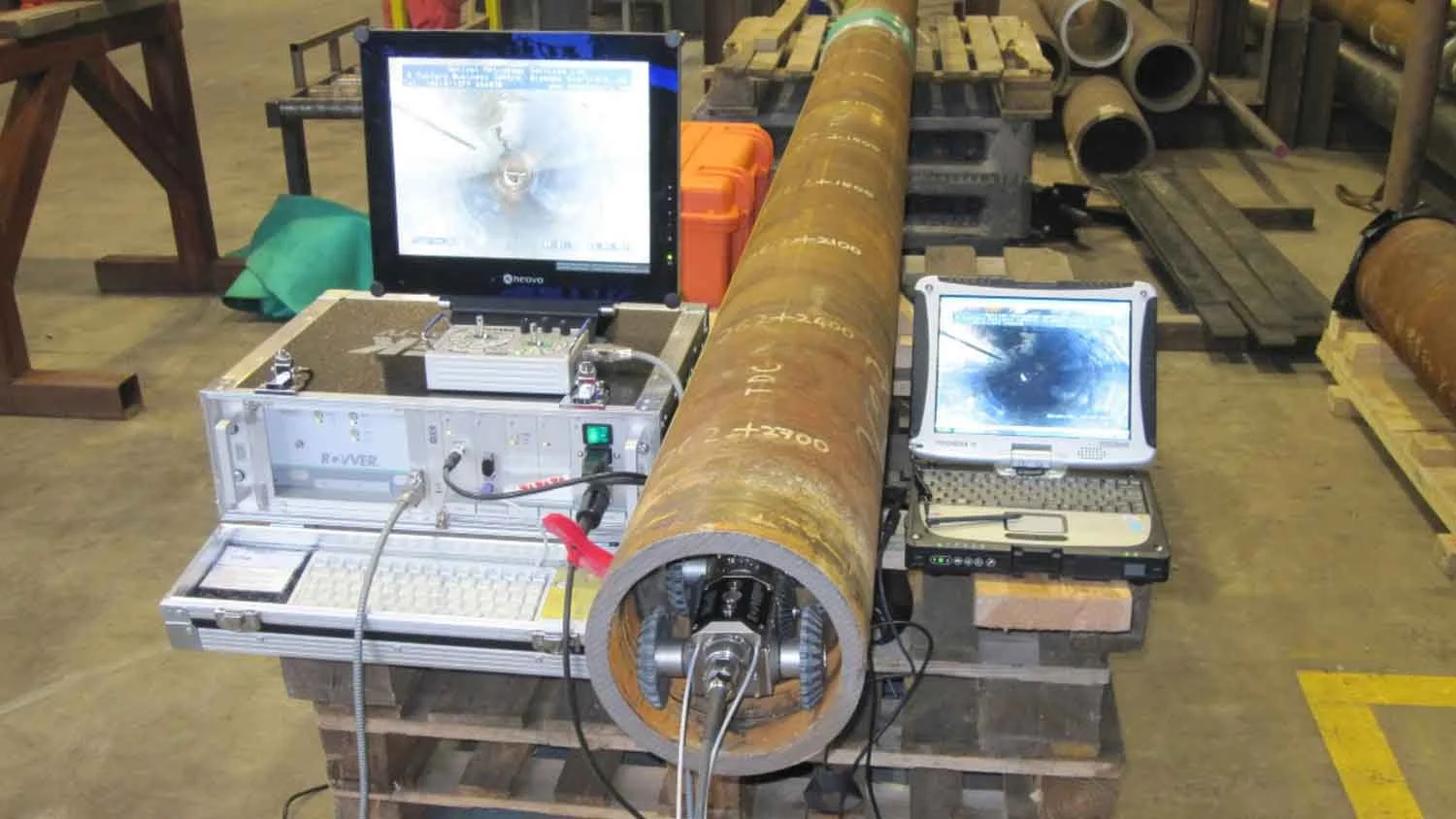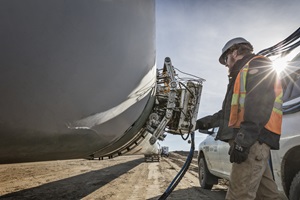Pipeline Welding Inspection: Making Certain Compliance with Industry Requirements
Pipeline Welding Inspection: Making Certain Compliance with Industry Requirements
Blog Article
Comprehensive Guide to Pipeline Welding Assessment: Making Certain Integrity and Safety in Pipeline Building and Maintenance
The honesty and safety of pipelines are paramount in today's facilities landscape, underscoring the critical function of welding assessment in pipe building and construction and maintenance. Pipeline Welding Inspection. The intricacies entailed in welding assessment raising relevant questions regarding sector requirements and the evolving technologies that may redefine these methods.

Value of Welding Inspection
Welding assessment plays a critical function in ensuring the stability and safety and security of pipe systems. It acts as a fundamental procedure that confirms the high quality and integrity of welded joints, which are typically one of the most weak spots in pipeline construction. Via organized evaluation, examiners can recognize potential defects such as cracks, porosity, and incomplete fusion, which may endanger the structural stability of the pipeline.
The significance of welding examination extends past mere compliance with market requirements; it also safeguards public health and the setting. If failures take place, pipelines bring unsafe materials position considerable threats. Efficient assessment procedures help avoid ruptures and leakages, mitigating ecological damages and safeguarding communities. Furthermore, thorough evaluations can enhance the durability of pipe systems, minimizing the need for expensive repair work and downtime.
In addition to guaranteeing safety and security and conformity, welding examination cultivates a culture of quality assurance within companies. By prioritizing inspection throughout the welding process, companies can build an online reputation for dependability and excellence, inevitably leading to boosted client confidence and organization chances (Pipeline Welding Inspection). Therefore, the relevance of welding inspection can not be overemphasized in the context of pipeline building and construction and maintenance
Key Welding Processes
Numerous welding procedures are utilized in pipe building, each with its very own benefits and applications. Among one of the most widely used methods are Shielded Metal Arc Welding (SMAW), Gas Tungsten Arc Welding (GTAW), and Gas Steel Arc Welding (GMAW) SMAW is preferred for its adaptability and capacity to perform well in different environmental problems, making it appropriate for area applications.
GTAW, usually described as Tungsten Inert Gas (TIG) welding, is recognized for its capability to create premium welds with outstanding control over warmth input, making it optimal for thin-walled pipelines and stainless-steel products. GMAW, or Metal Inert Gas (MIG) welding, supplies high deposition prices and is reliable for massive projects, typically employed in the manufacture of pipelines in regulated settings.
In Addition, Submerged Arc Welding (SAW) is used for its deep penetration and high efficiency, specifically in the construction of large-diameter pipes. Each of these processes contributes to the overall stability and safety of pipeline constructions, allowing welders to choose the most ideal technique based on material type, task requirements, and environmental problems. Understanding these key welding procedures is essential for effective pipe welding examination.
Typical Defects and Their Effect

Porosity, characterized by small gas pockets trapped within the weld, deteriorates the material and can cause leaks. Splits, which may happen because of thermal stress and anxieties or incorrect cooling, can propagate and result in structural failing under stress. Undercutting, where the base steel is deteriorated along the weld bead, lowers the reliable cross-section of the pipe, boosting the danger of fracture.
Incomplete combination happens when the weld metal does not effectively bond with the base steel, causing weak areas that might fail under stress. Slag incorporation, the entrapment of non-metallic product within the weld, can also weaken the joint's honesty. Identifying and addressing these defects early in the building and construction process is vital to guaranteeing the long-lasting dependability and security of pipeline systems, thus protecting both the facilities and the setting.
Examination Techniques and Devices

Aesthetic examination is the initial line of protection, permitting assessors to identify surface area irregularities, misalignment, or various other noticeable defects. Ultrasonic screening utilizes high-frequency acoustic waves to detect interior defects, providing accurate deepness measurements and defining issues without harming the weld. Radiographic screening makes use of X-rays or gamma rays to create photos of the weld, enabling the identification of internal spaces, splits, or incorporations.
Magnetic bit screening is especially efficient for detecting surface area and near-surface discontinuities in ferromagnetic materials. This technique entails using an electromagnetic field and great iron particles to the weld, revealing issues via the build-up of particles at imperfection websites.
In enhancement to these methods, specialized tools such as automated ultrasonic screening tools and electronic radiography systems enhance assessment accuracy and efficiency, guaranteeing a thorough evaluation of pipe welds throughout building and construction and upkeep.
Finest Practices for Conformity
Sticking to best techniques for compliance in pipeline welding assessment is critical for guaranteeing the stability and safety and security of the framework. Organizations has to establish a detailed high quality management system that straightens with market requirements such as ASME, API, and AWS. This consists of developing in-depth welding treatments that specify the strategies, certifications, and products required for look here welders.
Routine training and accreditation of evaluation employees are important to preserve high competency levels. Assessors ought to Extra resources know with numerous non-destructive screening (NDT) techniques, consisting of ultrasonic testing, radiographic testing, and visual assessment, to efficiently identify potential issues.
Documents plays a crucial role in conformity; keeping accurate records of examinations, weld treatments, and workers qualifications aids to make sure traceability and accountability. Set up audits and reviews of welding techniques should be conducted to recognize locations for enhancement and guarantee adherence to established methods.

Verdict
To conclude, the application of strenuous welding assessment procedures is vital for making sure the stability and safety and security of pipeline building and construction and maintenance. By determining flaws and employing sophisticated examination methods, organizations can dramatically enhance the top quality of welded joints. Abiding by ideal methods promotes compliance with market criteria, eventually protecting public health and preventing environmental hazards. Continuous enhancement in evaluation procedures will certainly contribute to the longevity and dependability of pipeline systems, highlighting the essential duty of welding assessment in the industry.
The integrity and safety and security of pipelines are extremely important in today's framework landscape, emphasizing the vital function of welding evaluation in pipeline construction and maintenance. Recognizing these crucial welding procedures is vital for effective pipeline welding assessment.
Adhering to best methods for compliance in pipe welding inspection is critical for making certain the honesty and safety of the infrastructure.In verdict, the implementation of rigorous welding examination protocols is paramount for making sure the honesty and security of pipeline construction and upkeep. Continuous renovation in inspection procedures will contribute to the Check Out Your URL long life and dependability of pipe systems, emphasizing the critical role of welding inspection in the industry.
Report this page